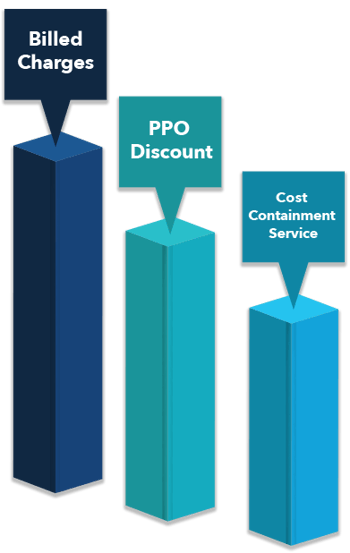4 Innovations that are Improving Self-Funded Health Plans
Article 2 of 4: Hire a Cost Containment Firm
Self-funding is rapidly moving into schools, cities and counties of all sizes as a major cost-control strategy. And why not? Governmental organizations that self-insure can design their own plans and tailor them to meet their employee’s needs, all while eliminating those features with little utilization. All signs indicate that self-funding your plan can yield significant savings for stable groups from 30 employees and up.
As adoption grows, cost-reduction strategies in self-funded environments are evolving as well. In this article series, Jason Rushton will share four top ways that your organization can take advantage of this trend.
Hire a Cost Containment Firm
Is your organization overpaying hospital bills or relying on the network to provide the best discounts? Hospital care accounts for about 40 percent of healthcare cost and at times 50-60 percent of the bill may be wrong, according to Mike Dendy of Phoenix-based Advanced Medical Pricing Solutions (AMPS). Dendy says his company can save an employer group “over 15 percent” by focusing on process errors on hospital bills.
In order to stabilize premiums, healthcare spending must come down. Now, self-funded schools, cities and counties can turn to cost containment providers who sometimes even guarantee results or there’s no charge. How do they do it? Several ways.
Healthcare Concierge Service
This type of service helps employees find their way through the maze of healthcare. Once diagnosed, employees get help to find the best providers for non-emergency services by comparing provider outcomes and pricing. Additionally, the service may also contract with these providers and determine pricing prior to care delivery.
Reference-Based Reimbursement
Reference-Based Reimbursement is making payment determinations based on the fair market value – generally a percentage above the standard Medicare reimbursement. The claim limits are consistent with ERISA and DOL guidelines and negotiate a percent margin above the actual cost.
Medical Bill Review/Audit
It is estimated that over 80% of medical bills contain errors due to lack of physician review and other factors. Some services provide physician reviews line by line to ensure the bill is accurate and then negotiate with the provider to make adjustments. Negotiations can be backed by legal defense.
Out-of-Network Bill Reduction
While most of your organization’s healthcare spending is likely in-network, schools, cities and counties are finding that out-of -network claims can be very high. One way to keep these costs down is to use a service to apply the reference-based reimbursement program and then having the employee pay the difference between what was billed and what was paid. The service can help negotiate with the provider if they do not accept the proposed payment.

